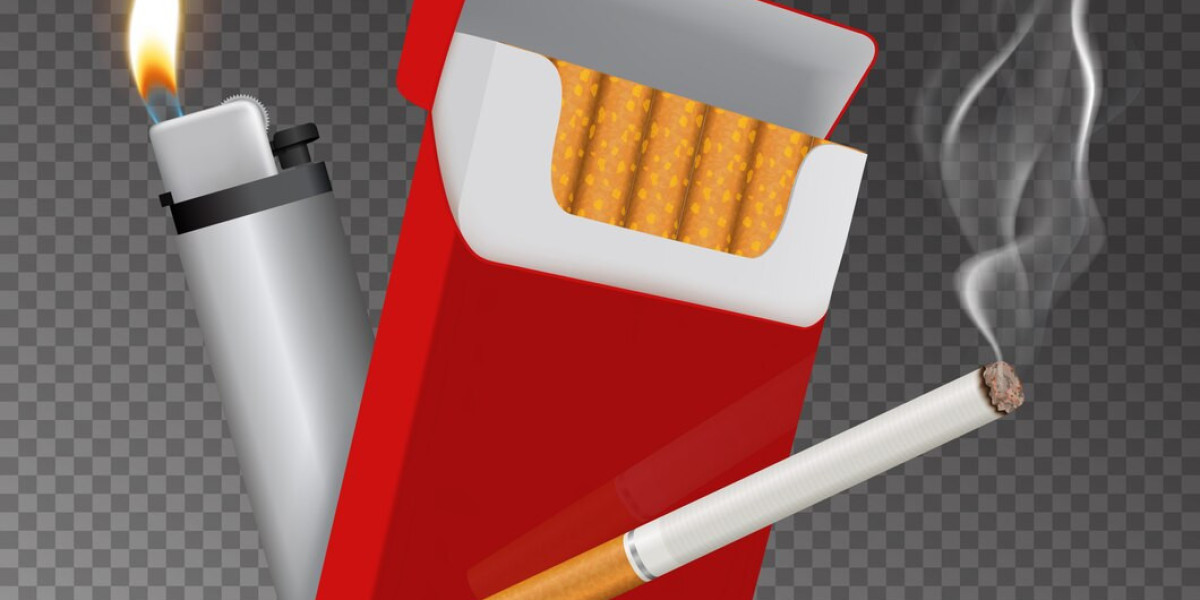The wholesale market is for printed custom cigarette boxes being the important segment of the tobacco industry combining functionality with branding and compliance with quite stringent regulations. The boxes are protective containers and basic marketing tools for the manufacturers and distributors of cigarettes even at a time when tobacco advertising is becoming more and more restricted. This article discusses several topics that characterize the wholesale printed cigarette packaging industry, such as the evolution in the dynamic regulatory environment, design trends, and opportunities that can be exploited by different businesses in this rather competitive market.
Importance of Printed Cigarette Packaging
Printed cigarette boxes help to protect tobacco products from moisture, light, and physical degradation; they also serve as a branding canvas where tobacco companies are able to mark their products in a very crowded marketplace. Eye-catching designs and strategic printing techniques will cause consumers to purchase products from the shelves, despite limits on overt marketing in retail environments.
In the wholesale market, printed cigarette packaging boxes are manufactured in bulk to cater to tobacco manufacturers, distributors, and retailers. The focus of wholesale suppliers is to offer quality and affordable pack solutions that satisfy standards of regulations while leaving the option of brand-identifying personalization. Aesthetic, compliant, and affordable is the recipe for success in this market.
Evolution in Cigarette Packaging
History in cigarette packing has gone hand in hand with changes in consumer demand and changing regulatory realities in the tobacco industry. Initially, cigarettes came in simple packs, usually in paper or cardboard materials, where branding sidelined. With a great many advancements in printing technology, it became possible for vibrant, full-color designs, embossing, and metallic designs to be incorporated into packaging, turning packs into someone's favorite marketing tool.
However, the last few decades have seen a turn-around of such picture. With the ever increasing anti-smoking campaigns, and stringent laws, the premises of the industry have changed. From plain packaging, mandatory health warnings, to misleading descriptors, governments worldwide have imposed stringent measures to manufacture packaging designs. These developments put wholesale suppliers at a point of investing in state-of-the-art printing technology and materials for the sake of compliance yet eye-appealing packaging.
Regulatory Challenges in Printed Cigarette Packaging
The whole system of wholesale cigarette packaging is gridlocked in a mesh of regulations geared to ensnaring prospects toward diminished smoking levels, and for the benefit of public health. Such regulations will dictate very much what can be done in design, production, and distribution of printed cigarette boxes:
Mandatory health warnings: large pictorial health warnings on the packets are required in many countries. For example, the World Health Organization is of the view that such warnings should cover at least 50% of the package, but some countries, such as Thailand, actually require as much as 85% of the pack to be covered.
Plain Packaging Laws: Plain packaging has been mandated in countries such as Australia, the United Kingdom, and New Zealand, requiring them to set colors for all packages (often dull brown or green) and typography with barely any branding. Such a standardization prevents itself from designs but instigates wholesalers to devote their effort to tactile features like texture, embossing, etc.
Track-and-Trace Systems: Unique identifiers and tax stamps on every pack have been made mandatory requirements in the European Union and most regions contributing in the battle against illegal trade, adding to the complications of production.
Restrictions on Material: Jurisdictions have also prescribed the prohibition of using certain chemicals or plastics in their packaging. Hence, it shifted to sustainable alternatives.
Wholesale Suppliers must be nimble for their printing processes and materials to comply with these evolving standards while creating strategies to meet customer cost efficiency.
Design Trends in Wholesale Printed Cigarette Packaging
Wholesalers have thus remained innovative in the printed cigarette packaging wholesale segment despite being limited by all kinds of regulations. Some of the primary design trends are:
Minimalist and Premium Finishes: Embossing, debossing, or matte finishes can be used by wholesalers in a plain-packaging market to induce that luxurious feel without infringing on brand properties.
Eco-Friendly Materials: Demand for recyclable or biodegradable packaging fuels the growing environmental consciousness. Instead, the bulk suppliers look into sustainable cardboards and inks for possible approaches to their eco-conscious brands.
Customizable Printing Techniques: The advanced process of printing known as digital and offset creates very high-quality, customized designs, allowing brands to have limited-edition packs or region-specific variations.
Compact Packaging: Slim boxes and petite pack sizes (for example, 10-cigarette packs) have been gaining favor among consumers who are trying to save their costs while synchronizing with portability trends.
Security Features: To meet the needs created by counterfeit products, the wholesalers implement holograms, microtext, or QR codes to maintain the authenticity of products while fulfilling the tracking provisions.
These trends show how creative the industry can be along the compliance lines for providing tobacco brands with unique packaging differentiation in the market. Opportunities in the Wholesale Market
Wholesale printed cigarette packaging has countless opportunities for suppliers and businesses:
Emerging markets: Smoking rates in developed countries have dropped.But there are now emerging markets in Africa, Southeast Asia, the Middle East: where Klins has started selling cheap and affordable, localized packaging designs for wholesale suppliers.
Sustainability selling point; Eventually, green packaging will prevail since the customers will be increasingly conscious about the environment. This would make a good impression to wholesalers who would provide green packaging options with any other additional feature.
New Paradigms in Technological Innovation: Advances in printing technologies, especially UV printing and smart packaging with NFC tags for wholesaler end-users, are creating more options for wholesalers to secure brands' product placement and engage consumers.
Diversification into Alternatives: With the onset of vaping and heated tobacco, anything that Butte-design or printing is doing in packaging is now well in the range of manufacturers for alternative packs of these products.
Challenges and Way Forward
The wholesale printed cigarette packaging sector has some challenges that include increasing costs of output as a result of regulatory compliance, fluctuating raw material prices, and competition from illegal trade. The fact that nicotine is being increasingly consumed in forms other than traditional tobacco products such as e-cigarettes creates opportunities and threats for traditional packaging suppliers.
The foresight expects the industry to embrace smart packaging innovations such as track-and-trace systems and elements that are interactive for compliance with regulations and consumer trust. Sustainability also takes a bigger share of what wholesalers do for material selection in compliance with global environmental goals. Suppliers whose portfolios include traditional tobacco products but include next-generation products will be in a good position as consumption patterns change.
Conclusion
The wholesale market for custom tobacco boxes packaging boxes is changing and vibrant, needing to be aligned with functionality, branding, and compliance. Supplying wholesale companies will easily keep moving with technological advancement through advanced printing, sustainable materials, and creative solutions in design, despite challenges posed by stringent regulations and dynamic consumer behavioral patterns. Thus, the industry could increase its competitive edge by taking advantage of emerging markets and new technologies, followed by strategic diversification within the industry. Such successes warrant an understanding of these trends and challenges for stakeholders.







